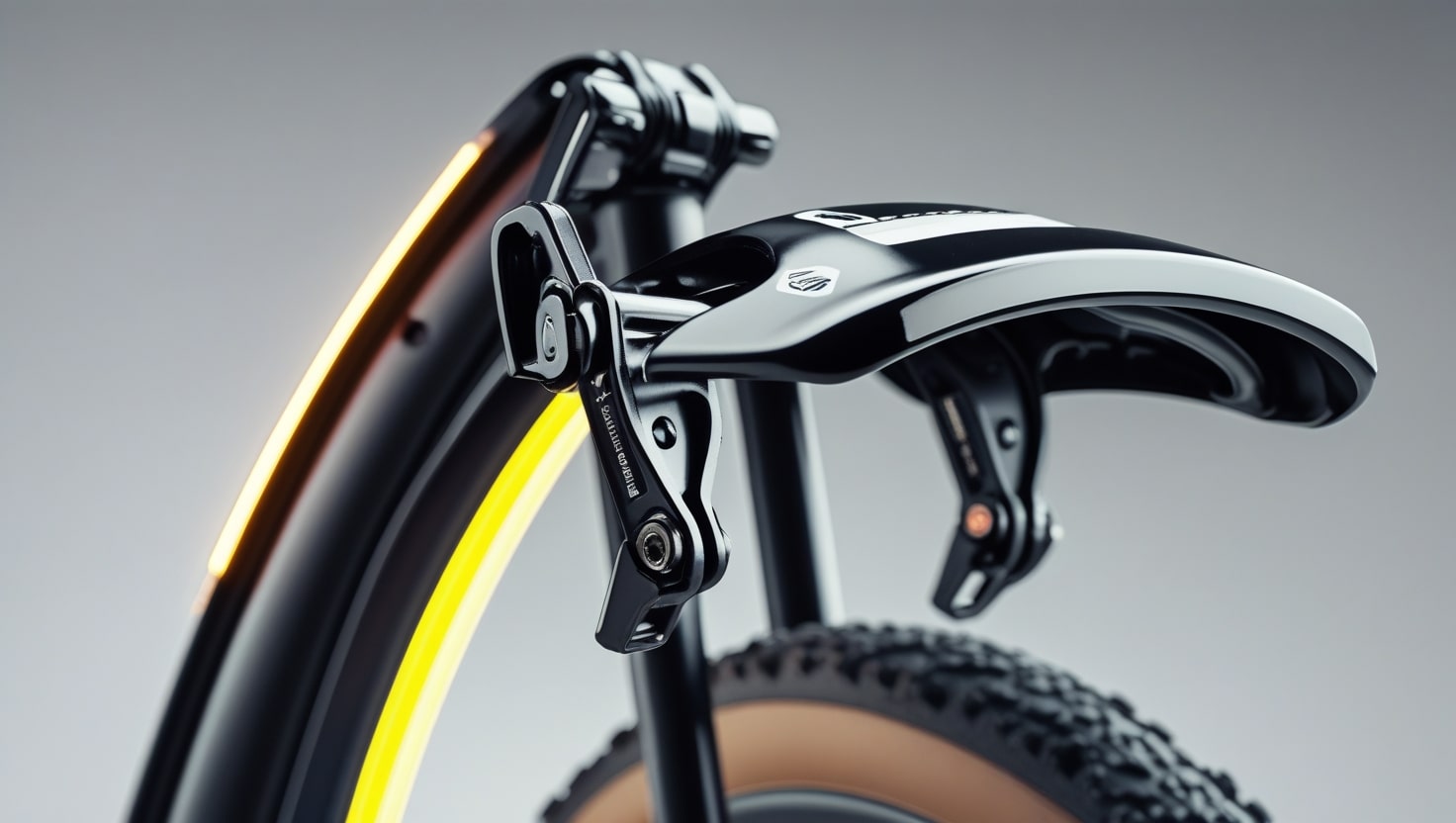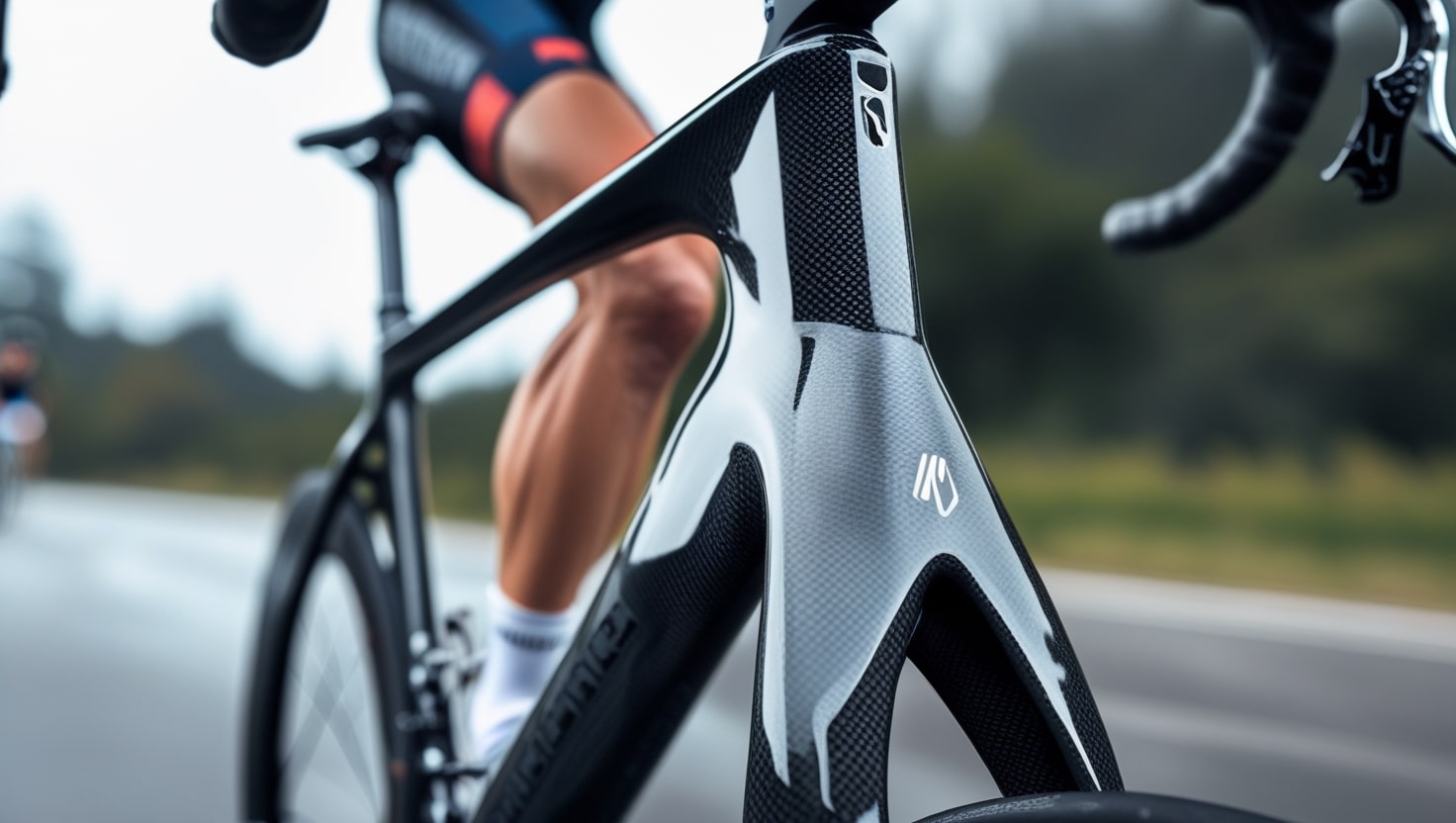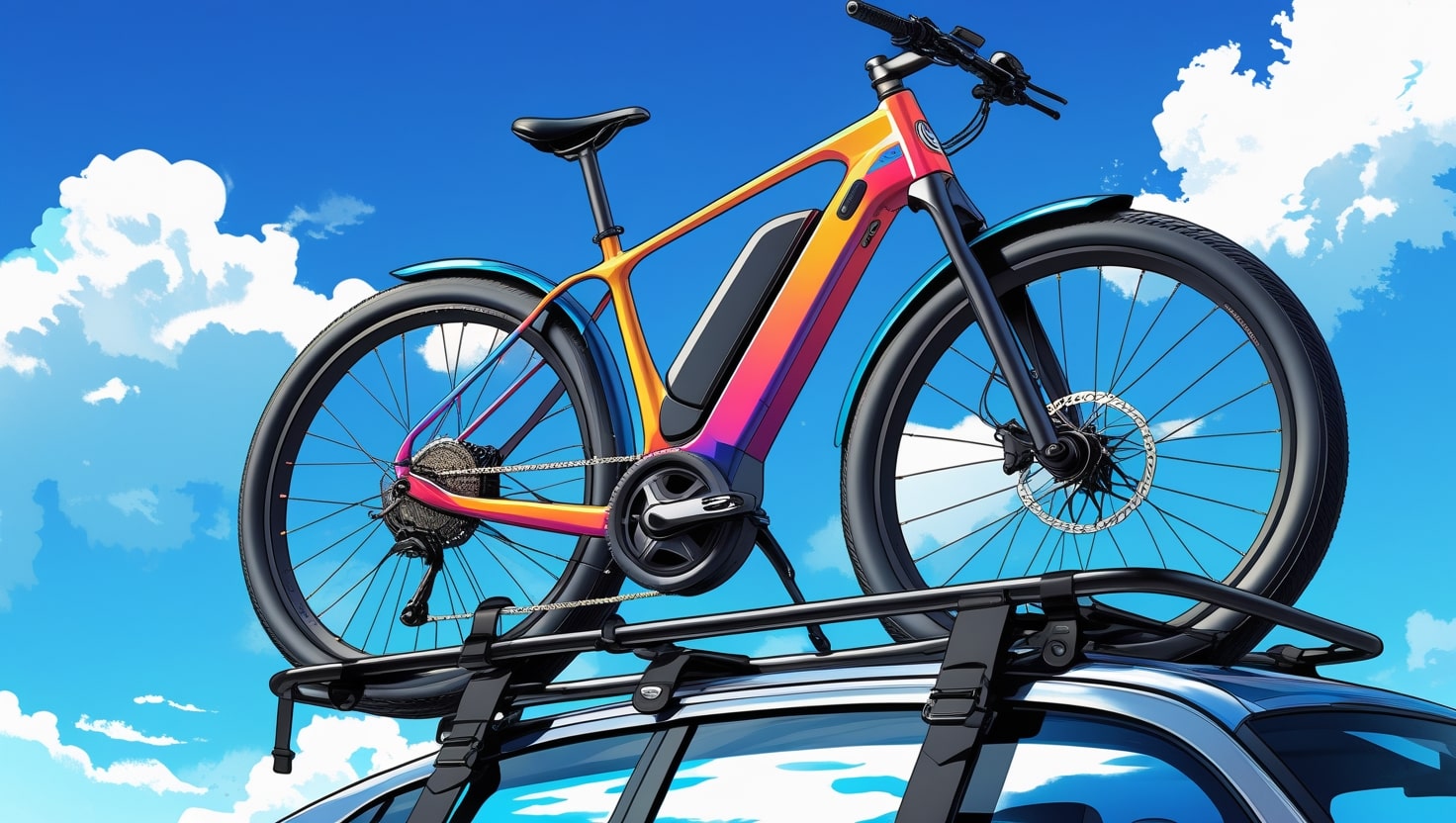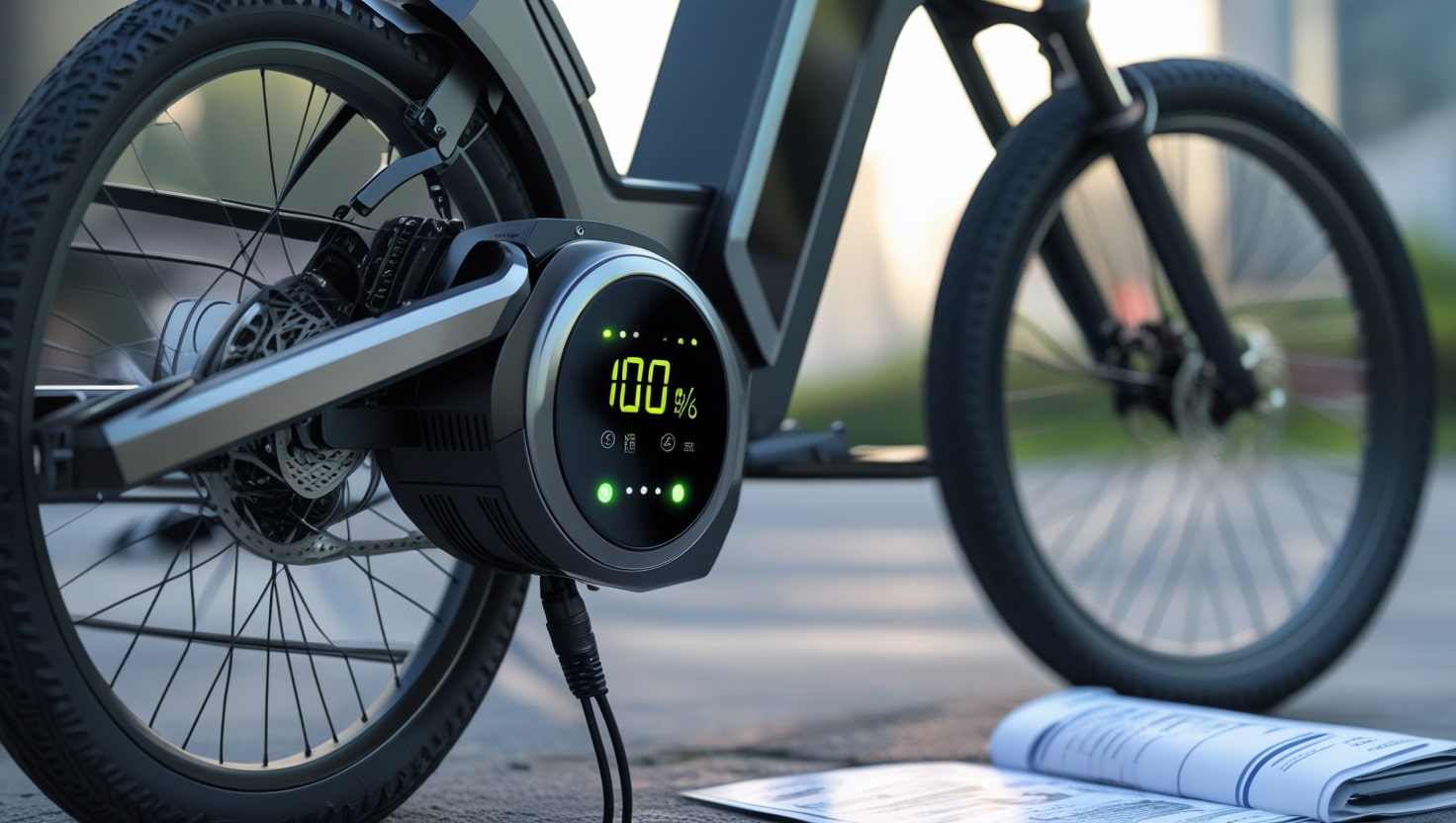Whether you’re tackling a daily commute or setting out on an epic cycling adventure, every rider knows the struggle of getting covered in road spray and mud from muddy roads. That’s exactly why clip on bike fenders—often called mudguards—are such essential equipment for year-round riding, especially in wet weather. As an avid cyclist myself, after clocking thousands of miles on various terrains, I’ve found that clip on bike fenders like those made by SKS offer the perfect solution. They’re lightweight, reliable, and incredibly easy to install or switch between multiple bikes.
Another advantage is their flexibility: unlike permanent fenders that require fender mounts, removable fenders keep your setup versatile and compatible with nearly any bike you own. Not only are they practical for keeping you dry and clean, but they also happen to be pretty good-looking. Plus, quality doesn’t have to break the bank—many affordable options perform just as well as expensive alternatives, making clip-on bike fenders a smart investment for any cyclist looking to ride comfortably, regardless of the conditions.
Best rear clip on bike fenders
SKS X-Tra Dry fender - $22.99
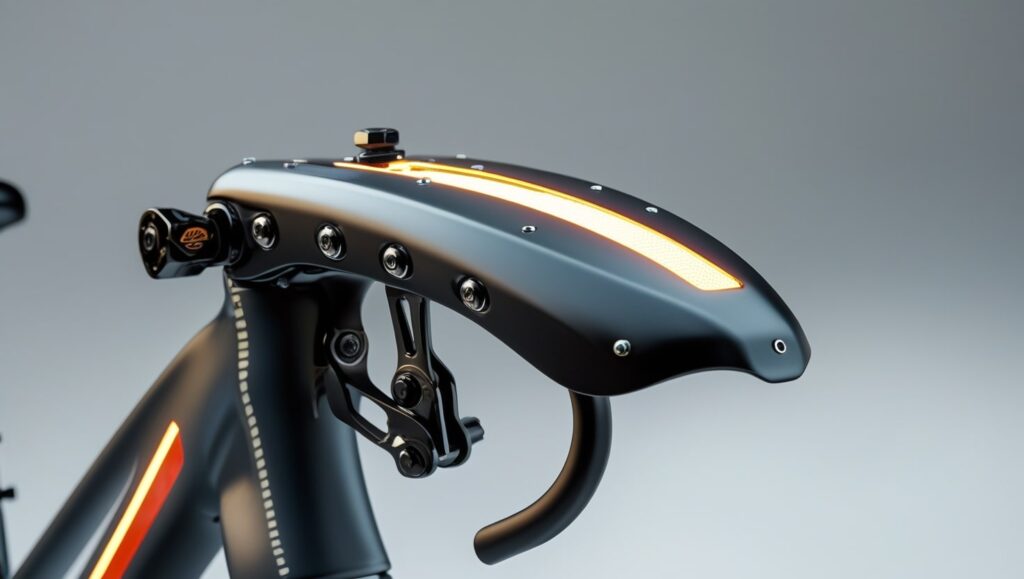
When it comes to clip-on fenders, the SKS X-Tra Dry has always been my top fender recommendation. Known as the gold standard among experienced cyclists and urban bike messengers since the 1980s, this fender is famous for its iconic design and unmatched durability. It features a sturdy, rubberized fabric strap and an easy-to-use quick-release mounting system that securely attaches the fender without letting it flap around, even on bumpy roads.
I appreciate the X-Tra Dry’s versatility, with its fully adjustable angle compatible with various frame geometries. Its beefy, wide profile provides excellent coverage for tires up to 2.5″, making it a solid choice for all types of riders.
SKS S-Blade fender - $24.99
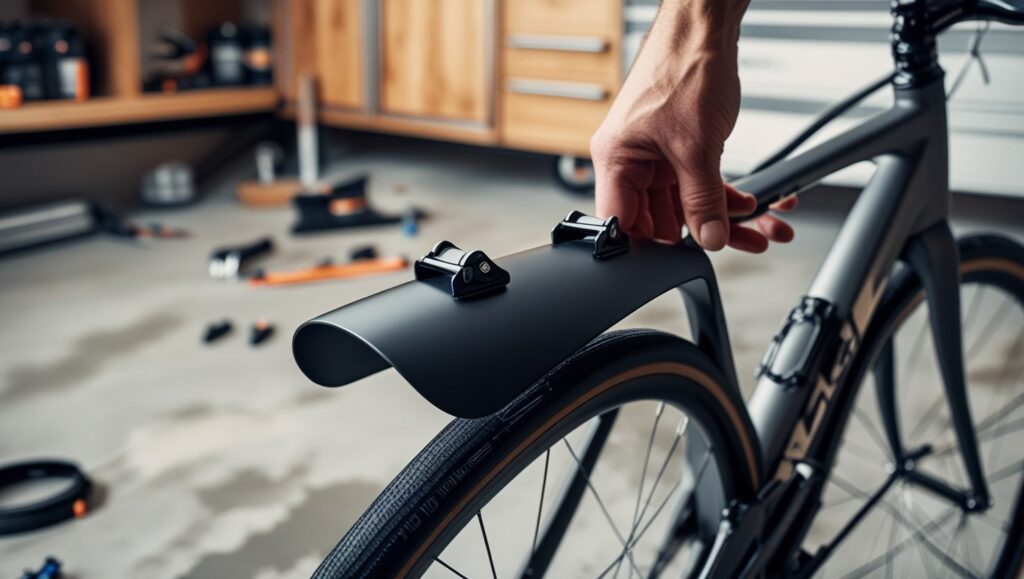
When heading out on wet winter rides, I often choose the SKS S-Blade—a slimmer, sleeker, and slimmed down version of the classic X-Tra Dry. This fender is the perfect ticket for your road bike, cyclocross, or gravel bike, providing enough cover to handle tires up to 38mm wide comfortably. Personally, I’ve even pushed it to 40mm tires on some muddy gravel rides without any significant issues, although beyond that, expect a bit more spray.
SKS X-Blade fender - $37.99
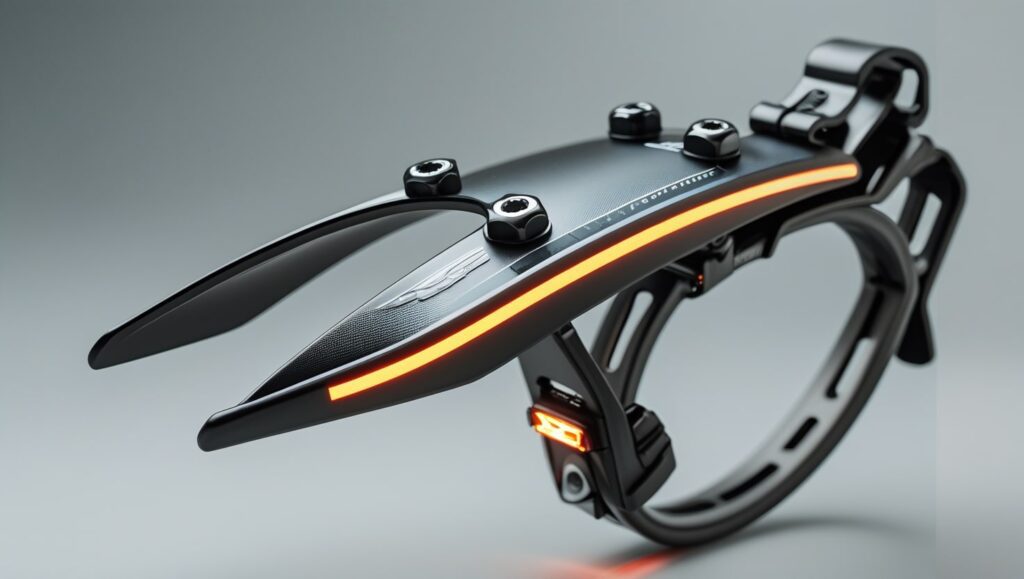
If you’re riding mountain bikes, especially full-suspension models, the SKS X-Blade is a perfect choice due to its exceptional adjustability. It features an additional pivot, making it highly adjustable to fit almost any frame geometry and solve clearance issues other fenders might have. Personally, I’ve found that it provides extra cover for wide tires up to 3″ and works reliably with different tire sizes thanks to the option of short length or extended designs.
PDW Origami fender - $21.00
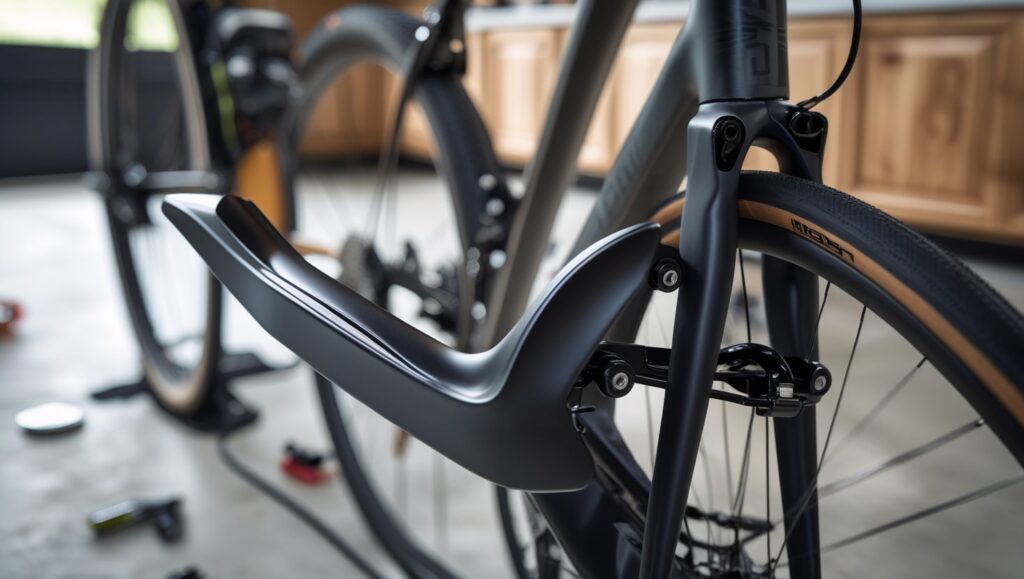
For riders who want a good, portable solution, the Portland Design Works (PDW) Origami fender is a solid pick. This foldable, packable fender is made from a thinner, lighter plastic compared to SKS, making it extremely easy to snap off the mount and store neatly in your bag during daily commuting or extended bikepacking trips. It even offers multiple color options, so you can match it nicely with your bike’s style.
While I appreciate how quickly you can snap it back onto the mount whenever needed, keep in mind the strap is quite thin and less robust than others, so it might not perform as well if you’re regularly hitting rough terrain. In my experience, the PDW works best as a light, convenient, emergency backup rather than a daily rider’s main choice.
Ass Saver-style fender - $10-20
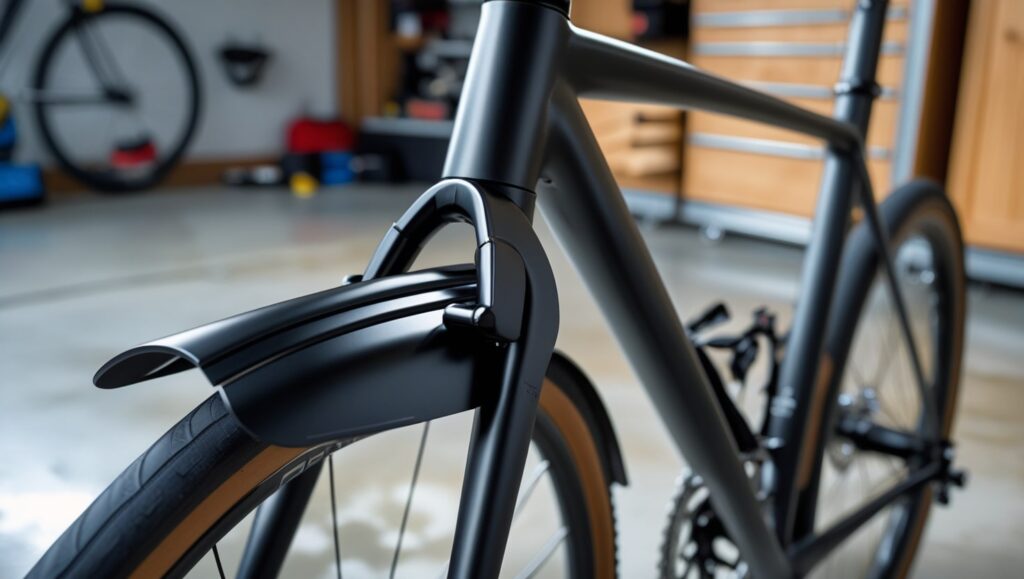
When I’m on my shoulder season rides, I often prefer a minimalist, simple clip-on fender that doesn’t add extra bulk or ruin my bike’s clean silhouette. An Ass Saver-style fender is my go-to choice because it offers just enough protection to keep your butt dry if you encounter an occasional wet road or unexpected puddle. They’re extremely lightweight, barely noticeable in terms of weight, and easy to attach or remove depending on the conditions and your looks preference.
While the original Ass Saver is popular, many other companies now offer similar fenders. Currently, I’m using a Mucky Nutz Butt on my hardtail MTB, and a narrower Mucky Nutz Butt CX on my road and gravel bikes, both providing solid protection without sacrificing style.
Best front clip-on bike fenders
SKS S-Board front fender - $26.99
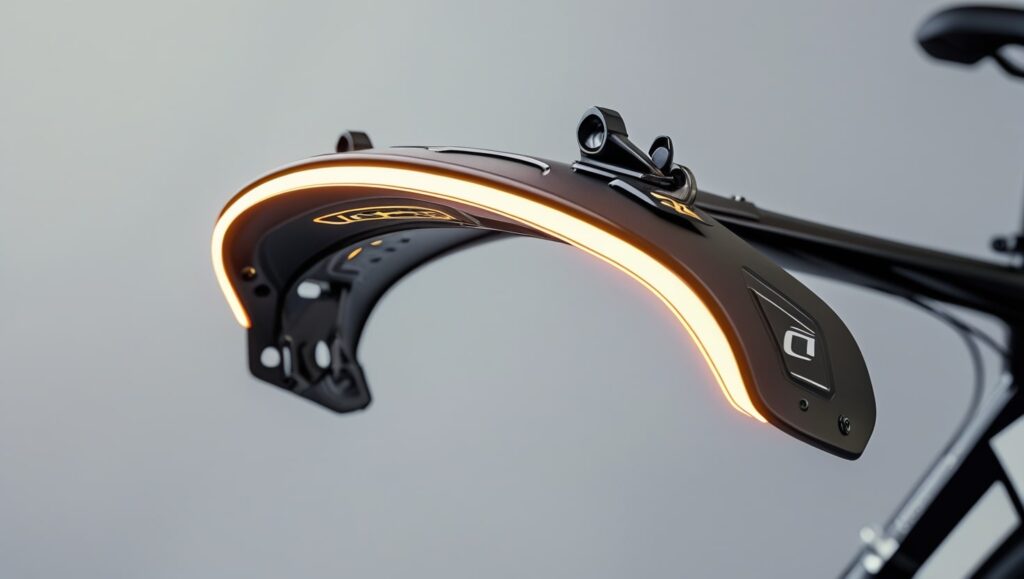
Most cheap clip-on front fenders I’ve tried were not worth the trouble, except for one notable exception: the SKS S-Board. It’s become my favorite pick for road and gravel bikes because it offers just the right amount of crud protection to keep your feet and drivetrain cleaner. The fender uses stretchy, secure rubber straps to quickly attach to your bike’s fork legs, providing effective coverage for tires up to 38 mm—though I’ve had good luck running it on 40mm tires as well.
Even in a heavy downpour, the SKS S-Board keeps most spray at bay, though a little might escape due to limited coverage in front of the fork. Nevertheless, it’s a great addition to the S-Blade rear fender. For mountain bikes, SKS makes the moto-style Shockboard, but since I haven’t tested it yet, I can’t confirm how effective it is.
Marsh Guard-style MTB front fender - $10-20
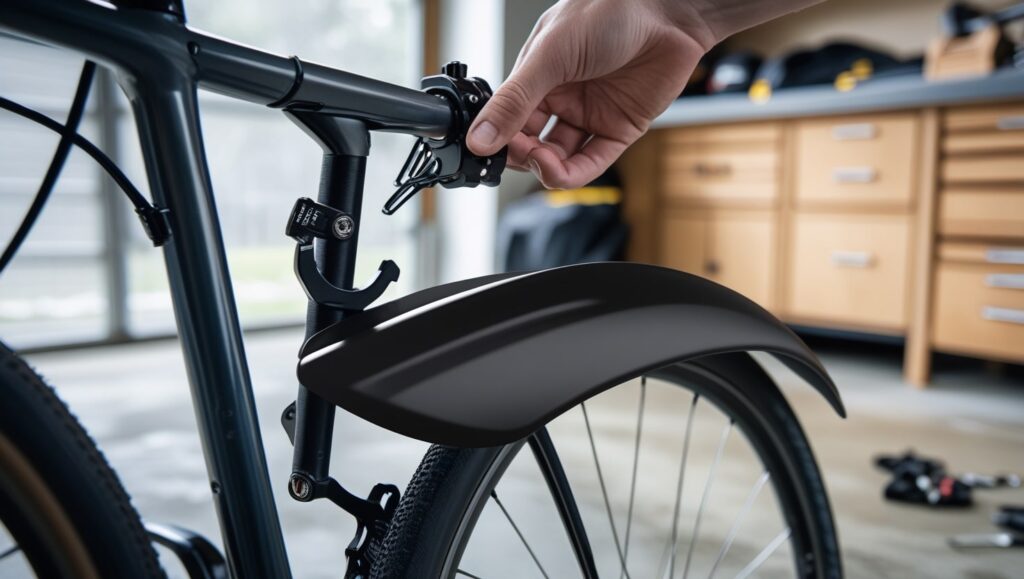
For those who frequently ride mountain bikes on muddy trails, a Marsh Guard-style fender is my favorite pick. These fenders are super cheap and made of lightweight, thin-plastic material—similar to an Ass Saver—so they weigh nothing but offer enough coverage to keep most spray and mud away from your face. They quickly attach to the arch of your suspension fork using either simple zip ties or velcro straps, though some new forks like the Fox 36 and Fox 38 even offer factory bolt-on options.
As a bonus, these minimalist fenders help keep your headset and fork stanchions clean, making maintenance easier year-round. While Marsh Guard fenders are among the original versions, plenty of other companies offer similar options, and some riders even cut their own out of scrap plastic. Personally, I’m currently using a Mucky Nutz Face fender on my own MTB, which can also extend further in front of the fork for extra protection.
Full-coverage clip-on fenders
SKS Raceblade and Speedrocker fender set - $74.99-85.99
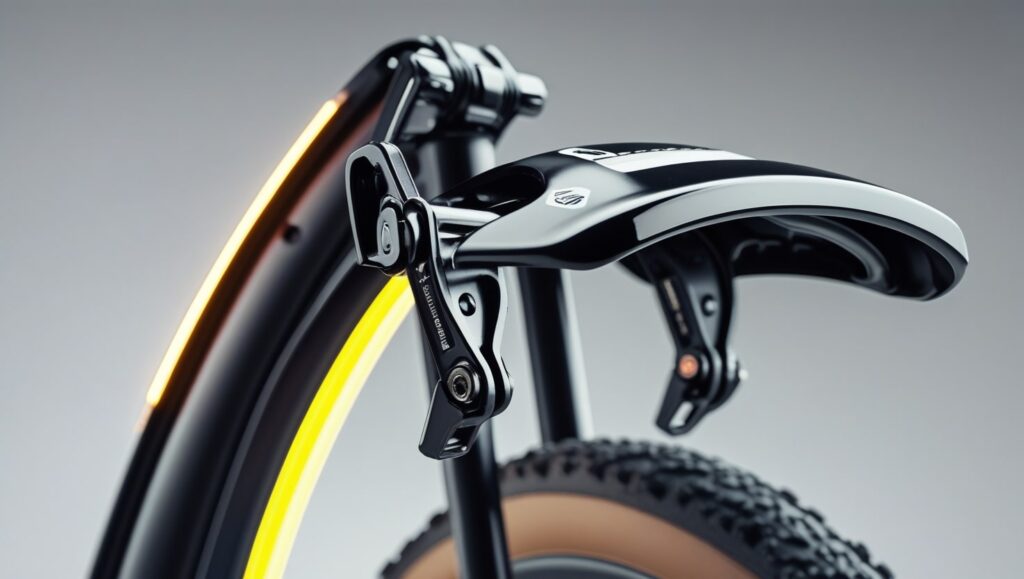
The SKS Raceblade and Speedrocker fender sets are ideal if you desire the convenience and detachability of clip-on fenders but still like the wide coverage of traditional fenders. Although slightly more expensive compared to others, these offer exceptional protection, making them ideal for regular riding in wet weather, especially when you’re in a group and want to minimize spray on riders behind you.
These fenders use flexible rubber straps, similar to those on the S-Board, to quickly attach to your bike’s fork legs and seatstays. They come in different sizes, with the standard Raceblade fitting 18-25mm tires, the Raceblade XL accommodating 25-32mm, and the Speedrocker perfect for 32-38mm (though I’ve personally managed to fit them onto 40mm tires). To get the fenders to follow the curvature of your tires perfectly, you might need to adjust the stays, possibly even cutting them slightly.
I usually leave these fenders mounted for extended periods of time since, although it’s not that difficult, mounting them can take a lot of time. Despite this, their balanced weight, excellent front and rear tire coverage, and reliable performance make them worth the effort.
How we test
At the ChiceBike team, we take testing mudguards very seriously. Each winter, our dedicated crew spends countless hours riding through the harsh inclement winters of the UK and Pacific Northwest, checking each fender’s ability to handle water, salt, grit, and constant abuse. We pay close attention to durability, ensuring the guards we recommend can survive being bashed in your garage, accidentally knocked by your feet while pedaling, or even damaged in a minor crash.
Another crucial factor on our hit list is ease of use and straightforward fitting methods. We know from personal experience how frustrating installing bike fenders can be. Our selection includes only those accessories that anyone can fit onto their bicycle at home using a few simple tools, ideally within about 5 minutes. We carefully test adjustability and coverage levels, confirming they effectively reduce rattles and keep you dry.
Lastly, we’re picky about the style and finish of each set of fenders. We appreciate how delicate bolting something onto your bike can be visually, so each recommended product must reliably track the clean lines of your ride while maintaining robust and durable fittings.
How to choose
Attachment Style
When choosing fenders, attachment style matters a lot. If your bike frame has dedicated fender mounts, you have the luxury of using full-length fenders that are secured directly to the frame’s bosses. These typically provide the best fit, with minimal rattle and fewer adjustment issues. But if your race bike or other lightweight bike lacks these mounts, you’ll want a clip-on guard, which attaches without permanent frame mounts, making installation easier for most cyclists.
Clearance
Another important factor is clearance. There’s nothing more frustrating than dealing with fenders that constantly rub against your tire—it’s a major annoyance. To avoid this, pick a fender with enough space to comfortably accommodate your specific tire width and wheel diameter. Many models offer different sizes, helping ensure you get proper coverage without unwanted rubbing.
Material
The fender’s material impacts both its durability and additional weight. Metal guards are more rigid and provide great long-term durability, making them ideal if you plan to make your guards a permanent fixture on your bike. However, metal is typically more costly, heavier, and less portable. On the other hand, plastic fenders are lighter and more affordable and still offer decent protection for riders who prioritize weight and ease of removal.
Flaps
Finally, for extra protection and to keep you as dry as possible, consider fender flaps. These extensions sit at the end of your fenders and extend their coverage, reducing splash significantly. Some fenders come with flaps as a standard feature, while others let you add them later as an aftermarket accessory.
FAQs
What are bike fenders/mudguards?
Let’s get one thing clear: mudguards and fenders are cool, and they do more than most riders give them credit for. We often spend hundreds of pounds or dollars on the best winter jacket, but overlook that a bike fender can keep us cleaner and drier for just a fraction of that cost.
There are generally two types of mudguards—those made for frames with dedicated fixing points (also known as fender mounts), and clip-on mudguards for bikes without them. If your bike has mudguard eyes, you still might opt for clip-on mudguards if you’re looking for something lightweight and removable.
Why fit fenders/mudguards?
If you’ve ever shown up to a group ride on a mudguard-less bike during the winter months, you’ll know it’s a fast way to lose friends. Many cycling clubs still enforce rules requiring guards in wet conditions, and for good reason. There’s honestly nothing worse than sitting in a bunch behind the guy spraying everyone with road grime. Trust me, to shun fenders in these moments is to ride at your own peril.
Beyond etiquette, mudguards and fenders do a huge job in protecting your frame, keeping salt, water, and grit from damaging your paint job. Even more importantly, they help in maintaining your drivetrain, shielding costly parts like chainrings and cassettes, and prolonging their lifespan.
Related: What Is a Fender Eliminator?
How easy are Mudguards/fenders to fit?
The short answer to this question is—it depends. The ease of fit really comes down to the brand, model, and your bike’s frame setup. If your bike has dedicated fixtures, fitting full-length mudguards like PDW full metals or SKS Bluemels may require cutting the stays to match your bikes perfectly. Once that’s done, it’s usually a simple bolt-on job that stays in place well.
With most clip-on options, things get easier. Fittings like cable ties or silicone strap systems are often included, especially with models like the SKS Raceblade Pros. But there’s always some nuance—no two mudguards will fit exactly the same across all bikes. Getting them in the right place, making sure they’re secured, and ensuring they stay put can take a bit of patience and practice.
Whatever you do, don’t tackle your install ten minutes before the Sunday club run. Poorly installed fenders can shift or fall off mid-ride, posing a real accident risk.
How do I know if my mudguards/fenders will fit?
Getting the right fender fit starts with checking your tire size. The general rule of thumb is to add 10mm to the marked tire width for proper clearance. For all-around coverage, you should get guards that are at least 38 mm broad if you’re using 28 mm tires. In recent years, rim widths and road bike tire sizes have been increasing, with 30mm, 32mm, and even 35mm tires now common on many stock bikes, especially those with 23mm internal rims.
Next, check your frame and fork for mounting points. Full-length models might be the most practical if your bikes have specific mounting locations. If not, a clip-on is a good substitute. For riders using gravel bikes or seeking an alternative setup, look for wider guards made to match today’s bigger tires and frames.

